Talk with our local travel specialist who can help organize your trip.
Exploring Thimphu Bhutan Travel Guide with Essential Tips!
Thimphu, the capital city of the enchanting South Asian country of Bhutan, offers a captivating travel experience to different monasteries, temples, museums, and natural trails.
Located in the central west region of the country, Thimphu offers its guests views of stunning fortresses like the Tashichho Dzong, the colossal statue of Buddha Dordenma, and the vibrant weekend market—marvel at the blend of tradition, modernity, and culture.
The travel guide offers essential tips on how to get there, destinations, budget estimations, and information about weather, food, culture, and more. Read through the guide to ensure your travel to Thimphu is unforgettable and transformative.
Bhutan Visa Requirements and Travel Permits
All tourists to Bhutan are required to obtain a Bhutan Visa. However, it's important to note that Indian, Maldivian, as well as Bangladeshi nationals do not require a visa; instead, they receive an entry permit upon their arrival at the designated entry point.
For other nationalities, Bhutanese visas are obtained through a licensed Bhutanese tour operator via online processing. It's essential to remember that Bhutan mandates that every tourist be accompanied by a registered guide and a private vehicle, all organized by an authorized tour operator.
Your chosen tour operator will oversee all the necessary arrangements and request specific documents, which typically include:
- Passport-sized photographs
- Personal information and essential details are needed to complete the online visa application form.
- Valid travel insurance covering the entire duration of your trip
- A copy of your passport, ensuring it remains valid for at least six months beyond your planned departure from Bhutan
- A comprehensive travel itinerary and pre-booking details, such as a hotel booking confirmation voucher in Paro, will be provided by the designated tour operator.
The visa application fee costs USD 40. The Department of Immigration issues this visa, which can take up to 5 working days and will be passed to you by the tour operator before you enter Bhutan. The officers at the immigration counter will check it upon arrival at the Paro International Airport.
Besides, tourists must pay a Sustainable Development Fee (SDF) of $100 per night. This is the most recent change made on August 25th, 2023, and has come into effect from September 2023 until September 2027.
Travelers must budget separately for food entry charges, accommodation, transport, and guide fees, as the SDF does not include this.
There is a 50% concessionary levy on this fee for kids aged 6 to 12 years and a total exemption for children aged five years or under.
While India, Maldives, or Bangladesh nationals won't need a Visa before entering, they will have to pay the required amount for SDF, somewhere between $15 to $17.
Reaching Thimphu and local transportation
There are three ways of reaching Thimphu: via air and road.
Via Air: The only international airport in all of Bhutan is in Paro; hence, tourists wishing to visit Thimphu can fly to the nearest gateway in Paro International Airport. Druk Air and Bhutan Airlines (Tashi Air) have daily connecting flights from cities like Delhi, Mumbai, Gaya, Guwahati, Bagdogra, Kolkata (India), Kathmandu(Nepal), Bangkok (Thailand), and Singapore.
From Paro, you can take a taxi or any private vehicle to Thimphu, which is 55 Km away and takes approximately one hour to reach.
Via Road: The other way to reach Thimphu if you are traveling from a nearby country, India, is to enter through the border. You can enter via the Jaigoan-Phuentsholing border in West Bengal.
You can also try the other two entry points in Assam: Bongaigaon-Gelephu and Darangamela-Samdrup border. However, the most popular one is via Phutentsholing. From Phuentsholing, you can take a regular bus to Thimphu, spanning 164.6 km.
There are different modes of transportation like Taxis, private vehicles, minibusses, and public buses that go in and around Thimphu all the time. The traffic in Bhutan is not congested; hence, you will be surprised to know that there are no traffic lights and the policemen control the traffic. However, taking a taxi or private vehicle is advised if you want to reach the destination quicker.
Places to visit in Thimphu
Thimphu has ample exciting places that should be explored; some of the most prominent are mentioned below:
1. Tashichho Dzong
One of the most revered places on Thimphu's northwestern edge is the Tashiccho Dzong, called the "Fortress of the Glorious Religio." An architectural masterpiece and of administrative relevance, it has the throne room of the King of Bhutan and serves as the seat of the Bhutanese government.
Built-in the 17th century, it upholds the sovereignty and spirituality of Bhutan. The artisans' white walls, golden spires, and fantastic woodwork are worth witnessing.
2. National Memorial Chorten

Located in Doeboom Lam of Thimphu, the National Memorial Chorten was constructed in the memory of the third King of Bhutan. The beautiful stupa is a white structure with golden spires and meaningful carvings. It stands as a symbol of peace and prosperity and serves as a place for meditation and local worship.
Due to its historical and religious significance, it is a must-visit place in Bhutan.
3. Buddha Dordenma

A visit to Thimphu is complete with exploring the high-standing Buddha statue in Kuensel Phodrang Nature Park. Considered as one of the largest statues of sitting Buddha at 169 feet, it was constructed to celebrate the 60th anniversary of the fourth King of Bhutan.
You can click pictures of the statue and gaze around the serene city and panoramic views.
4. Motithang Takin Preserve

Motithang Takin Preserve is a must-visit place for you if you are a nature lover. The national animal of Bhutan is the Takin, which has the unique head of a goat and the body of a cow.
They roam around the preserve so you can witness them in their most natural state.
This was once a royal hunting ground, but considering the number of Takin remaining, the grounds have been made to protect the Takin and the natural environment.
5. Simply Bhutan
"Simply Bhutan” is a living museum. Aiming to showcase the culture and traditions of Bhutan, the museum is interactive to visitors. You can immerse in the experience of Bhutanese traditions by exploring the recreation of a Bhutanese village, participating in traditional activities, and tasting local cuisine.
6. Changangkha Lhakhang
A religious place perched on a ridge overlooking the Thimphu valley is the Changangkha Lhakhang.
The historic temple was built in the 12th century and still holds significant religious practices from the locals. It is dedicated to Avalokiteshvara, known as the Buddha of Compassion.
This is not just a place to witness the locals praying [practices but also the amazing panoramic views from the hill.
7. National Textile Museum
If you want to understand the heritage, history, and traditions of the Bhutanese people and their origin, you must visit the National Textile Museum in Norzin Lam.
The museum depicts Bhutanese textile traditions with a wide range of fine textiles, costumes, and artifacts collections.
You can marvel at the art of weaving and understand the significance of the textile heritage in the economy and livelihood of Bhutan.
8. Folk Heritage Museum
Another museum worth visiting is the Folk Heritage Museum in Pedzoe Lam, which shows the authentic Bhutanese rural lifestyle.
You can explore the traditional artifacts and witness the tools and techniques that the locals used for cooking and weaving. The museum has recreated farmhouses to show what life in rural Bhutan was like.
9. Weekend Market
A great way to witness Bhutanese's local way of life and traditions is by visiting the weekend market. The Centenary Farmers Market in Thimphu is a vibrant hub for locals to buy various products.
You can interact with the locals to understand their livelihood and buy fresh produce, handicrafts, and textiles. This is a good place to devour some local Bhutanese cuisine from street vendors.
10. Simtokha Dzong
Visit one of Bhutan's oldest fortresses, Simtokha Dzong, south of Thimphu. It was built in the 16th century and is known as the sport where a demon had vanished into a bedrock.
The fortress's interior is almost entirely covered with vibrant murals, while its exterior is whitewashed. The fortress has served as a place for religious practices and cultural studies.
Featured Trips
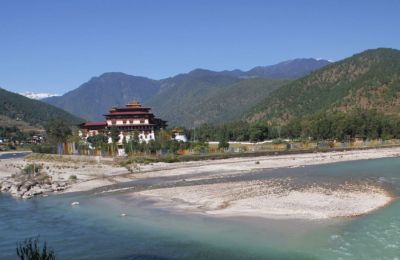
Bhutan Cultural Tour - 5 days
Bhutan Cultural Tour of 5 days lets you discover the rich Bhutanese culture. Visit ancient fortresses and Taktsang Monastery. Enjoy traditional hot stone bath.
Inquire NowWhere to travel next?
Get help from our travel specialists for holiday ideas that matches your interests.
Best Time to Visit Thimphu
The best time to visit Thimphu is during the spring season from April to May, when the temperature ranges from 5°C to 21°C in Thimphu. The sunny days bring in pleasant weather good for flora and fauna. This is the best season to enjoy outdoor activities under the bright blue skies.
The other season that is great for travel is the Autumn season, from September to October.
The temperature sits anywhere from 8°C to 21°C. The skies are clear during this time and best for nature excursions. The Thimphu Tsechu festival is also celebrated in September and October, where you can witness the cultural events, masked dances, and religious rituals.
Seasons not considered the best for travel to Thimphu include the Monsoon season from June to August when the temperature is warm and reaches close to 30°C with rainfall. The other off-season is winter, with temperatures going as low as -5°C, and there are possibilities of snowfall in the hills.
Travel costs and currency
There are different budget options depending on your interest in spending. At a minimum, a day in Thimphu will cost you $300, which includes the government fee, tour operator, accommodation, food, and private vehicle. If you want to take the luxury option with luxury accommodation, it can cost as much as $2000.
Some of the cost will be paid upfront during your agent's pre-booking. You can carry some additional cash for your shopping except for the amount mentioned above.
As for the official currency, Bhutan uses Bhutanese Ngultrum (BTN). It is advised to carry cash for small transactions with vendors. However, most hotels accept credit cards, and there are banks and authorized exchange centers, considering it is the capital city.
Internet and Mobile Connection
The capital city has wide internet and mobile coverage. As a tourist, your best way to get this facility is by securing a prepaid SIM card from BMobile or Tashicell network retail outlets.
These tourist SIM card packages come for $30 to $40 for a 7-day stay, but there are other packages depending on the duration of stay.
Generally, they come with pre-activated 4G data plans, which ensure a month of seamless internet access. Furthermore, the majority of hotels in Thimphu offer dependable WiFi services.
Accommodation in Thimphu
There are different accommodation options in Thimphu as it is a major tourist destination. The average cost of a decent hotel or lodge is close to per night.
Budget hotels like Hotel Ghasel and Bhutan Centennial cost anywhere from $40 to $50. The mid-range hotels like Lemon Tree Hotel, City Hotel Thimphu, and Hotel Khamsum cost around $90 to $150. Lavish hotels like Hotel Pemako, Hotel Druk, and Terma Linca Resort and Spa cost close to $250 to $300 per night.
The hotels and resorts in Thimphu have all the necessary furniture, facilities, and amenities, from luxury to budget hotels.
Food in Thimphu

Bhutan has unique and delightful cuisine, and the food in Thimphu reflects the local produce and traditional cooking. Ingredients like rice, vegetables, cheese, beef, spices, and buckwheat are common in food because they are sourced locally.
Traditional foods like Ema Datshi (chilly and cheese stew), pita (buckwheat noodles), jasha maru (spicy chicken stew), and yaksha shakam (dry yak meat) are worth trying. Enjoy local drinks like Suja (butter tea) and Ara (a drink made with fermented wheat, rick, millet, or barley).
Different restaurants and local kitchens around Thimphu offer this food, and the weekend markets are also a great place to try it.
Culture, traditions, and festivals of Thimphu

The culture and tradition of Bhutan are reflected in how people eat, enjoy festivals, pray, and dress in Thimphu. Something that you might frequently notice in the streets is the men wearing an authentic dress called Gho and the women wearing Kira attire, which are long, warm robes.
Monks are seen wearing long maroon robes and working in monasteries. Bhutanese people speak Dzongkha as their official language, but English is widely used in Thimphu.
Thimphu celebrates many important festivals, the main being the Thimphu Tsechu, which is celebrated usually in September and October annually for three to four days in the Tasichho Dzong.
It is known to be dedicated to Guru Rimpoche, who introduced Buddhism to Bhutan. You will get to observe masked dances, the unfolding of the large Thongdrel scroll, prayers by laymen, and more.
Additional Tips
Before you visit Thimphu, the following are additional tips for you to consider:
- Carry essential documentation and permits: Ensure all your required documents and permits are organized, and collaborate with your travel agent in advance.
- Appropriate attire: Given Thimphu is one of the world's highest capital cities at 2,320 meters, carry warm clothing and acclimatize by staying well-hydrated, particularly in cold weather conditions.
- Respect local norms: Show reverence for local customs by adhering to practices like removing shoes at designated places, dressing modestly at religious sites, seeking permission for photography, and refraining from public displays of affection, which are uncommon in Bhutan.
- Environmental responsibility: Embrace Bhutan's commitment to environmental sustainability by avoiding single-use plastics and supporting eco-friendly options.
- Take health precautions: Prior to your trip, consult your doctor for necessary medications and vaccinations, especially if you have preexisting health conditions. Exercise caution when trying new cuisines.
- Tipping etiquette: Tipping isn't customary in Bhutan; feel free to tip if you appreciate exceptional service.
- Learn to speak local words: To connect with locals, consider learning basic greetings like saying "Kuzuzangpo la" (hello) and "Kadinche la" (thank you).
Where to travel next?
Get help from our travel specialists for holiday ideas that matches your interests.
- Written by: Naba Raj Amgai
Updated: Sep, 11, 2023

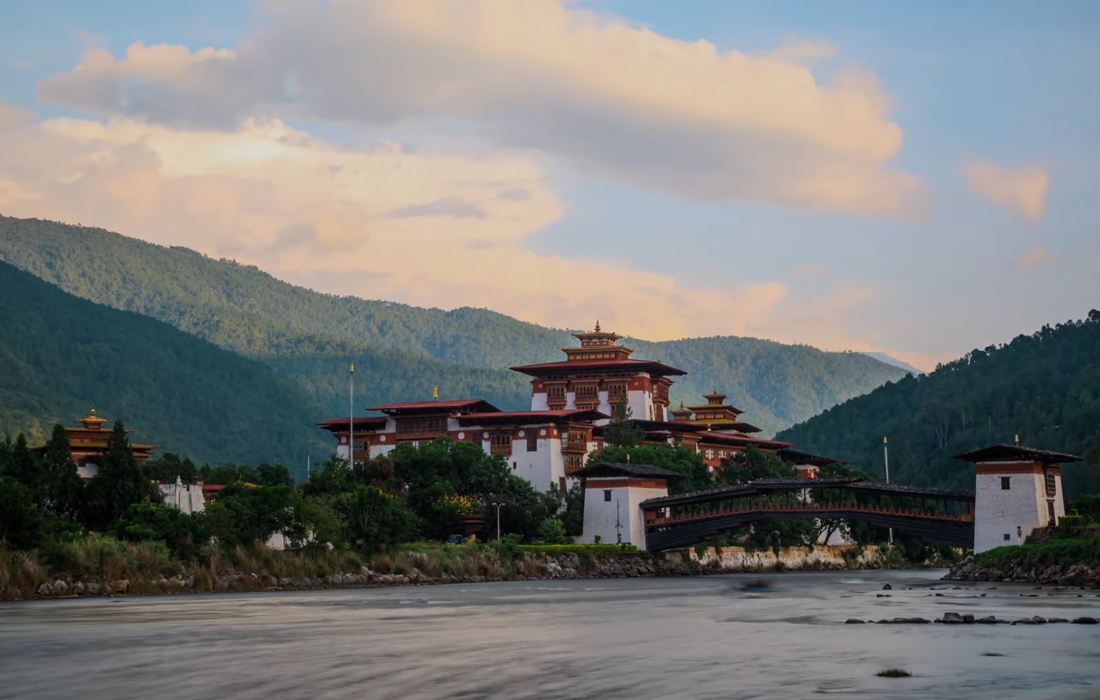

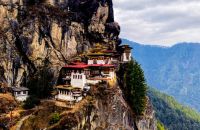
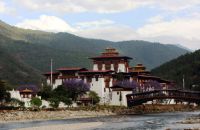
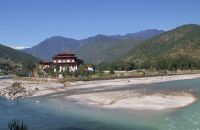

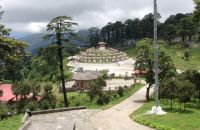





.jpegXkO.jpeg&width=200&height=130)









